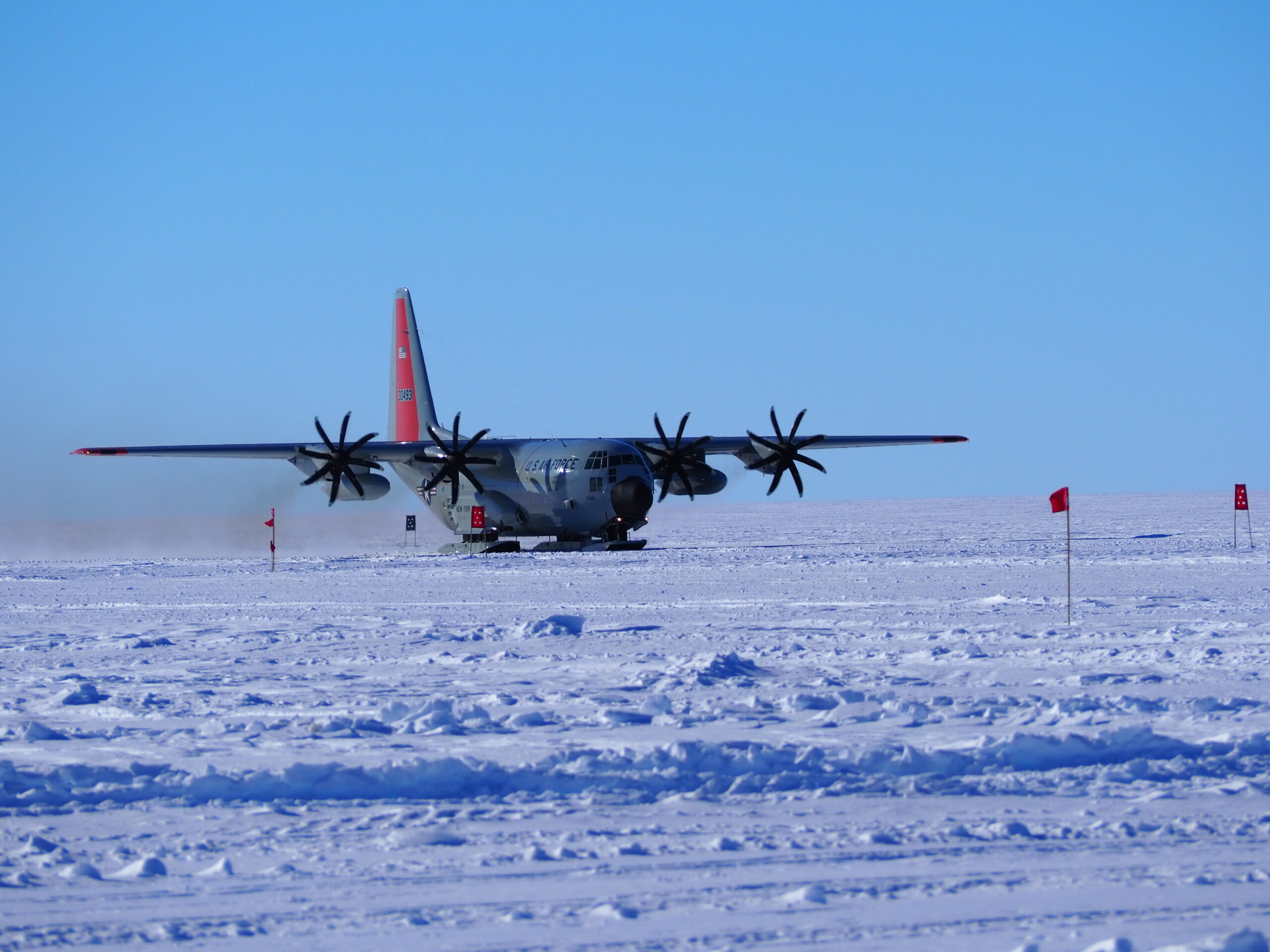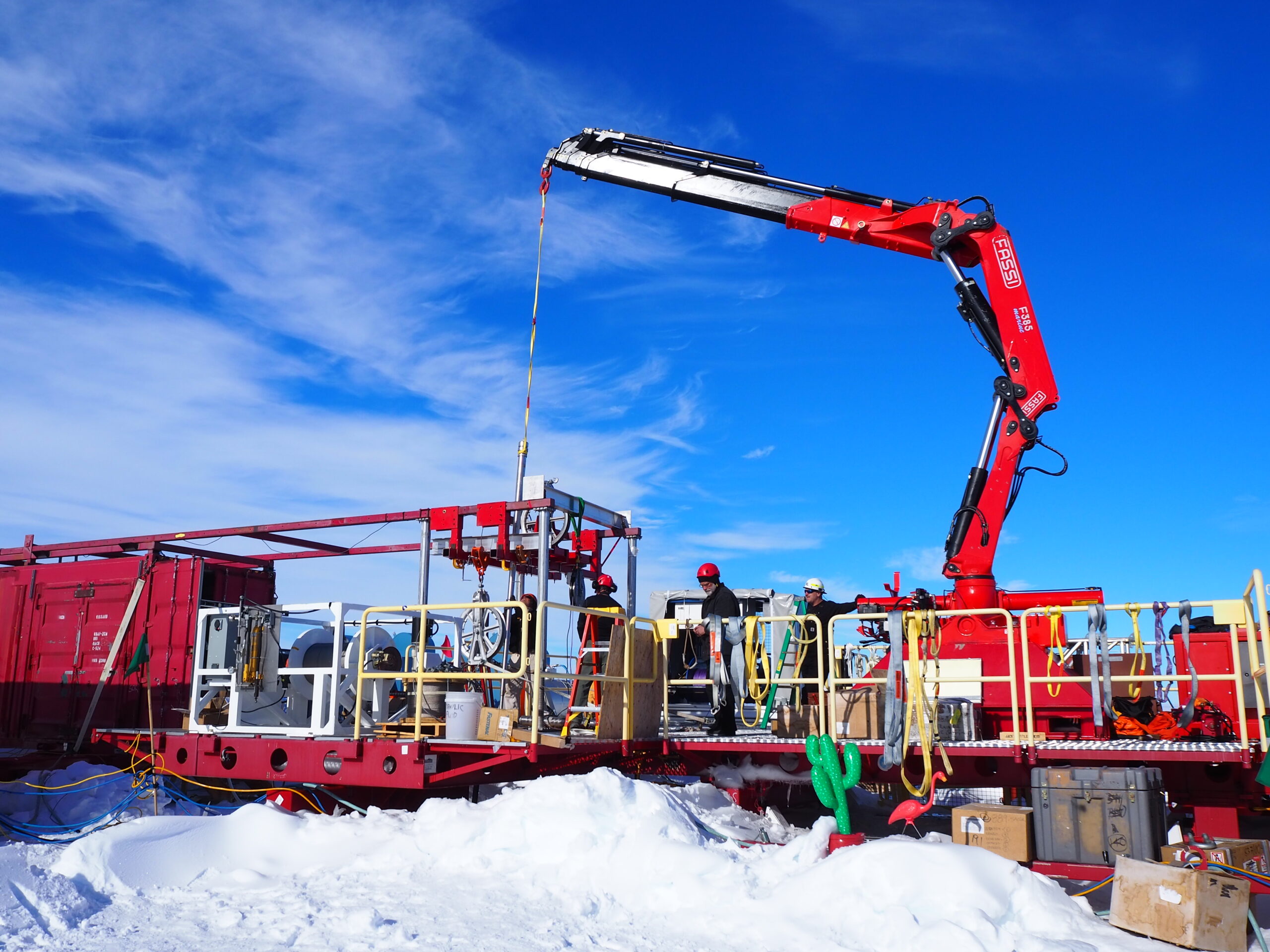Did you know that some archaea (one-celled forms of life) can survive in extremely hot and extremely acidic environments? They have been found living at 113 degrees Celsius (235 degrees Fahrenheit: hotter than boiling water).
How about super cold environments: could there be life on freezing moons and planets? Under the ice at Earth’s poles? How can a geochemist — someone who studies rocks and other materials found right here on Earth — help answer that question? Read on for a few clues.
Chemistry solves mysteries. Chemists experiment until they find the right molecules to use to create the best chocolate, treat diseases, make paper to hold liquids, and improve renewable forms of energy. One chemist Math4Science spoke with uses chemistry to figure out where dangerous chemicals in the air around Los Angeles come from. But chemists study all matter — all of the stuff around us, not just chemicals humans use.

Geochemist Ryan Venturelli uses chemistry to solve ancient mysteries involving Antarctica’s ice. Because the carbon and other greenhouse gasses we put into Earth’s atmosphere have been causing our planet to heat up faster than it might have otherwise, glaciers at the South and North Poles have been changing in ways scientists are studying carefully. Venturelli uses chemistry to investigate the rocks and sediment under Antarctica’s ice sheet in order to figure out what was happening to the glaciers way before scientists started watching them.
She looks at the carbon deposited under areas where glaciers moved back. This is often land-based field work, involving radiocarbon dating and looking at the molecular, isotopic composition of the carbon to see where and when it came from. That information can help scientists “figure out what made that ice retreat over the position where that carbon accumulated.”
When people first began exploring Antarctica, humans believed that this ice-covered continent at Earth’s South Pole “was just a cold, dead place” aside from a few penguins and seals living at its edges.
SALSA, the Subglacial Antarctic Lake Scientific Access project, had Venturelli and her colleagues pulling up a 2.06 meter deep sediment core. [If there are 100 centimeters in one meter, how many centimeters was the core Venturelli and the other scientists pulled up from under the ice?] They pulled this piece of dirt up from Antarctica’s Mercer subglacial lake, one of the hundreds of lakes found under the ice sheet. It came from a place that Venturelli describes as “completely dark, completely cold.” The scientists sunk tools down to the lake’s floor to pull up the core, which had a mix of sand, rocks, water, and tiny creatures (microbes) and their fossils in it.

Mercer lake is about 150 kilometers (a bit more than 93 miles) away from the nearest ocean. One of the things that looking at this sediment core helped the scientists figure out is that the lake was connected to the Southern (Antarctic) Ocean about 6,000 years ago. They used radiocarbon dating to discover that information.
Sea water brought carbon to Mercer lake all that time ago — carbon which microbes there “are still living off of.” In other words, says Venturelli, there is an “intimate connection between history and current communities” of tiny life forms under the Antarctic ice. “For me,” says Venturelli,’ “it’s always surprising where we can find life. The microbiologists [she works with] say ‘wherever there’s water, there’s life.’”
Many scientists travel to Antarctica and bring up sediment cores from the layer of sand, silt, and other sediment that lies between ice and the rock below. Those cores are stored at a place Venturelli calls “the greatest dirt museum ever,” at Oregon State University’s Marine and Geology Repository.
Venturelli and Glacial Geologist Lauren Miller Simkins as well as Sedimentologist Lindsay Prothro are working together to bring the latest types of research to cores that were brought up years ago. Venturell points out that many of the methods used for this project didn’t exist when some of the repository’s cores were collected. The scientists and their students are investigating the effects of glaciers on the sediment by looking at the sediment itself and also the tiny fossils found within it and the chemistry of the rocks themselves.
They’re asking questions about the sediment cores: how well have they been preserved? What can they learn from the core tops (the sediment that landed around the time the cores were collected)? What indications are there that sediment no longer covered by ice once was covered by it? And how do cores collected from different parts of the sea floor, some under fast- and some under slow-moving ice, compare? Venturelli, Simkins, Prothro and their students take small samples from the cores back to their home universities. For Venturelli, this is Colorado School of Mines.
How did Venturelli, the first in her family to attend college, end up with a PhD in marine geology? Ryan remembers collecting rocks with her parents when they traveled and asking them for a tumbler for her birthday, to make the rocks shiny. “I was always a very outdoorsy kid,” she says, who “liked playing in the dirt.”

Ryan’s father is a pipe-fitter and her mother works for an insurance company. They took her camping and insisted that she go to college, to give her more professional opportunities. She initially chose to major in business at Indiana University, because the only person she had known who went to college was an accountant. But business classes did not appeal to her. An academic advisor suggested that Venturelli choose geology for one of her required credits “‘because people generally like that.’”
“I absolutely loved it,” so Venturelli changed her major and studied with a professor researching the movement of the Indiana dunes and their relationship with Lake Michigan, as it developed. They looked at the last thousand years of Earth’s history. “It really just hooked me,” says Venturelli. And when she was a senior in college, another professor told her “‘you don’t really seem done learning yet,’” and suggested that she go to graduate school.
Working on her masters in marine sediments at Indiana State University, in Terre Haute, examining fossils living in the area, Venturelli worked with people investigating the geochemistry of those fossils. That led her to seek her doctorate at the University of South Florida, where she planned to look at the geochemistry of shells. But when her doctoral advisor received funding to work on a project in Antarctica and offered Venturelli a position, she “ended up in the right place at the right time” to delve into the long history and chemistry of ice on earth.

When Venturelli first began learning about chemistry, it “didn’t make any sense to me. But when you put chemistry in the context of measuring … Earth material, whether that be a rock or a sediment core and tie it to what it can tell you about the past,” things made better sense. Now she’s helping people who study our planet’s climate explain the changes they’re seeing, so that we can all plan for the future.
Understanding how glaciers and ice sheets change and have changed since long before satellites and visits from scientists allowed us to observe them “can help us to understand what’s normal and contextualize how far from normal we are now.” Venturelli’s work teaches us about changes that have happened since the most recent ice age (the last glacial maximum). “We need to understand how we’ll recover from the big-scale ice mass loss that we see today” as the fossil fuels we burn and other changes we make in our atmosphere heat up the planet.
But if it’s outer space that interests you, the research Venturelli and her colleagues do in Antarctica is still relevant. If there’s life under Antarctica’s ice, perhaps creatures also live on some of the icy moons we can’t get to easily within our solar system.”


